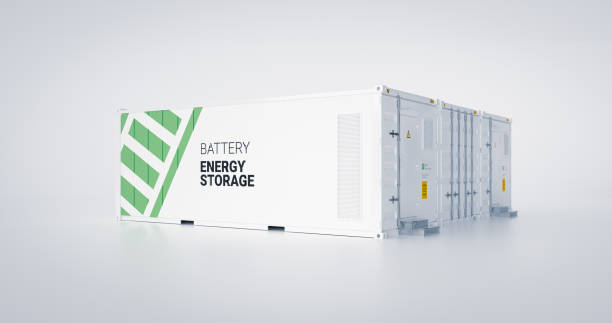Our Course
Battery Storage System Design & Engineering Course




Course Overview
This course offers a comprehensive introduction and in-depth exploration into the world of High Voltage Direct Current (HVDC) systems, one of the most advanced and essential technologies in modern power transmission.
Key Features:
Based on IEC & IEEE Standards
Aligns with global engineering practices and regulations.Hands-On Design Training
Real-world design tasks, case studies, and simulation projects.Expert-Led Sessions
Learn from professionals with direct HVDC project experience.Project-Based Learning Approach
Focused on practical implementation, not just theory.Blended Learning Model
Live sessions, recorded modules, and interactive Q&A.Industry-Recognized Certification
Enhance your resume with a certificate aligned with power sector standards.Career-Focused Curriculum
Designed to prepare engineers for roles in utilities, EPCs, and consultancies.Access to Simulation Tools
Experience design and analysis using industry-grade software.
Completing this course will charge you for:
Understand the fundamentals and significance of HVDC in power transmission.
Analyze and design HVDC system components such as converters, transformers, filters, and protection systems.
Evaluate different HVDC configurations (monopole, bipole, back-to-back, etc.).
Perform system planning and load flow studies for HVDC integration.
Understand key control strategies and protection schemes used in HVDC networks.
Apply international standards (IEC, IEEE) in HVDC design and operations.
Be industry-ready with real-world project insights and simulation-based learning.
Who is the course for?
Electrical Engineering Graduates and Final Year Students
Working Professionals in Transmission & Distribution
Power System Engineers looking to specialize in HVDC
Engineers preparing for utility or consultancy roles
Academicians and Researchers interested in advanced power transmission technologies
Anyone eager to upskill in cutting-edge energy transmission systems
- Certified
- 90 Days
- 50 Students
- 100 Sections
- Martha Hudson
- 10 Modules
- 24 Downloadable Resources
- Fulltime Access
Course Modules
- Introduction to HVDC
- Principles of HVDC Conversion
- HVDC Lines
- HVDC Sub Stations
- Reactive Power Management in HVDC Stations.AC & DC harmonics and filtering
- HVDC System operation, Insulation Coordination, Emergencies and case studies
- HVDC System operation Control and maintenance
- Overview of HVDC System Benefits
- Comparison of HVDC and AC Transmission Systems
Main Types of HVDC Schemes (VSC & LCC
- VOLTAGE SOURCE CONVERTER (VSC)
- LINE COMMUTATED CONVERTER (LCC)
HVDC CONFIGURATIONS
- MONOPLAR HVDC SYSTEM WITH GROUND RETURN
- MONOPLAR HVDC SYSTEM WITH METALLIC RETURN
- BIPOLAR HVDC SYSTEM
- BACK-TO-BACK HVDC LINKS
- MULTITERMINAL
Converter Theory
Principle Arrangement of an HVDC Transmission Project
The key differences between HVDC and AC systems and the importance of HVDC in modern power grids.
- Converter Transformer Design and Function
- Thyristor Valves in HVDC Systems
- Smoothing Reactor: Purpose and Implementation
- Harmonic Filters: AC Harmonic Filters
- Harmonic Filters: DC Harmonic Filters
- Harmonic Filters: Active Harmonic Filters
- NEUTRAL BREAK SWITCH
- NEUTRAL BREAK GOUNDING SWITCH
- POLE METALLIC RETURN TRANSFER BREAKER
- DEDICATED METALLIC RETURN TRANSFER BREAKER
- DYNAMIC BREAKING SWITCH
Discuss the role of these components in improving HVDC transmission efficiency and reducing system faults.
- OFFSHORE SUBSTATION
- ONSHORE SUBSTATION
- RECTIFIER STATION
- INVERETR STATION
- System aspects of VSC HVDC system
- Equipment aspects of VSC HVDC
- HVDC grid development and Interoperability
- Control and protection of VSC HVDC
- Future outlook
- System aspects of VSC HVDC system
- Equipment aspects of VSC HVDC
- HVDC grid development and Interoperability
- Control and protection of VSC HVDC
- Future outlook
- Objective
- Protection Principals
- Dual Redundancy
- Protective Zones
- Measurements
- Classes of Protection
- Protection Marshalling
- Protective Action
- Blocking Sequence
- Fault Case
Engineering Specialists & Lecturers from






Electrical Engineer | Tesla Electrical | Ghana
The electrical substation course is an excellent course that helps you understand the concepts of electrical substation and also provides you with the practical knowledge needed to implement what has been taught to real life projects. I would recommend this course to any up and coming electrical engineer.

Grid Solutions Manager | IB Vogt | Greater Madrid
Excellent academy for the Substation course. The content is comprehensive and up-to-date, making it ideal for both professionals and those new to the field. The presentations are clear, well-structured, and the instructors demonstrate deep expertise. The practical approach helps to easily apply the knowledge gained. Highly recommended for anyone seeking high-quality training in the electrical sector.

Senior Electrical Engineer | L&T-S&L | India
I recently had the opportunity to enroll in the Electrical Engineering Substation training program offered by 50Hz Academia, an online platform specializing in engineering education. As someone seeking to deepen my understanding of substation fundamentals, I found the experience to be incredibly valuable and rewarding.First and foremost, the course content was extensive and well-structured. From the basics of substation components to advanced concepts in power distribution each module was meticulously crafted to provide a thorough understanding of the subject matter. The instructors demonstrated a profound knowledge of the material and presented it in a clear, concise manner, making even the most complex topics accessible to learners of all levels.One aspect of the training that particularly impressed me was the use of real-world examples and case studies. By applying theoretical concepts to practical scenarios, the instructors were able to illustrate the relevance and application of the material in industry settings. This approach not only enhanced my understanding of the subject but also fostered a deeper appreciation for the intricacies of substation design and operation.

Electrical Engineer | Tengizchevroil | Cape Town
Substation Design Course
Excellent course with top course presenters. Real world information is shared. Highly recommended.
Substation Layouts covered very well.
Substation Equipment also covered in detail and well explained.

Senior Electrical Engineer | Sedgman | Canada
I recently attended a course on substation design and engineering. The course covered a lot of material suitable for intermediate and advanced levels. We explored various subjects related to substation design, engineering principles, and safety rules.
One of the standout features was the focus on real-world applications. We looked at case studies and scenarios, which helped us understand how theoretical knowledge is applied in practice. The course also included sessions on single line and layout drawings, which are essential for substation design.
Overall, the course provided a solid foundation and practical skills for anyone interested in substation design and engineering.

Power Systems Engineer | KETRACO | Kenya
I recently enrolled for 50hz-academia’s Substation Design Course. The course instructors, who I found to be extremely knowledgeable, did a solid job and covered critical topics such as: –
1. Substation layout development in AutoCAD.
2. Primary Equipment Selection + their associated Engineering Calculations (useful handbooks/calc. sheets shared).
3. Cable, Battery and Earthing Design, and so much more.
The interactive course also takes a highly practical approach with instructors always making references to real-life SLD’s, technical specifications, layouts, equipment assembly drawings and standards (IEC, IEEE), etc.
I highly recommend it for aspiring substation design engineers.

Electrical Engineer | AMGD | United Arab Emirates
I recently attended the Substation Design course with 50Hz Academia, and it was a game-changer for me as an Electrical LV/ELV specialist. The instructors were knowledgeable and used real-world examples to cover every aspect of substation design and engineering.
The course covered all components of substation design.
Real-world examples made the learning experience valuable.
The training gave me the confidence to deliver complete substation designs and provide design support.
I highly recommend 50Hz Academia’s Substation Design course to electrical engineers looking to upgrade their skills. Thank you, 50Hz Academia, for providing this valuable training opportunity!

Directeur technique | VDN Group | France
I highly recommend 50 HZ Academy for anyone looking to deepen their knowledge in HV substation design. The skills and insights gained from this training will undoubtedly enhance my professional capabilities.
The trainers were knowledgeable and approachable, always ready to clarify doubts and share real-world insights. The hands-on exercises and case studies helped bridge the gap between theory and practice, making the learning process engaging and relevant.

Electrical QA/QC Engineer | GPEC | Riyadh Region
The substation design course proved to be an exceptional learning experience, providing a concise yet through exploration.
Training experience was Outstanding.


